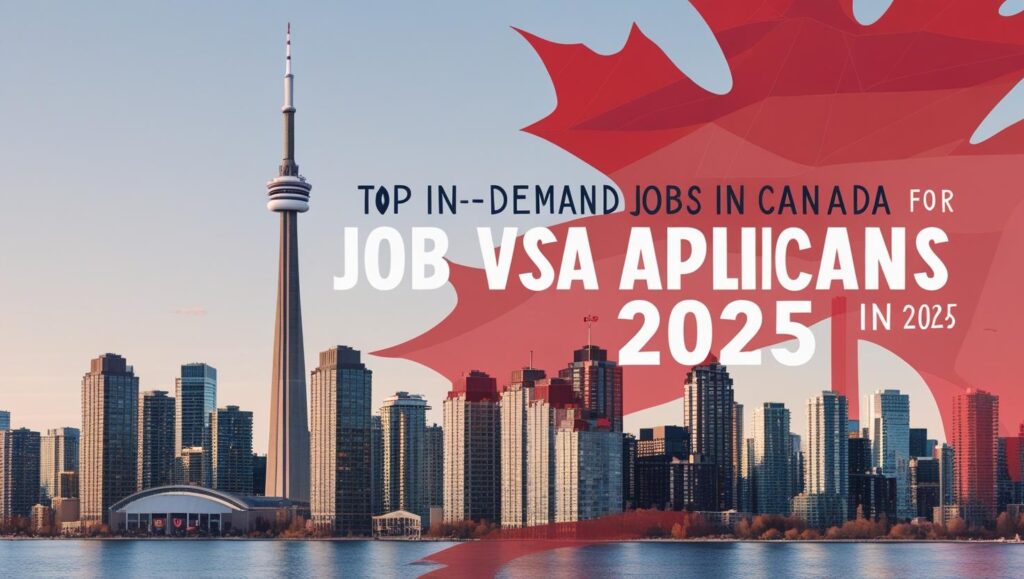Canada remains a top destination for skilled workers and international graduates seeking high-quality jobs and career growth. In 2025, online applications for Canadian jobs have become easier thanks to portals like Job Bank, LinkedIn, Indeed Canada, and company career pages.
This guide provides step-by-step instructions for international candidates from countries like India, Bangladesh, Pakistan, and others. It covers how to create a Canadian-style resume, write effective cover letters, apply through various online portals, and understand work permits and PR pathways. By following this guide, you can increase your chances of landing a job in Canada and strategically plan your pathway toward Permanent Residency (PR).
—
Understanding the Canadian Job Market
Before applying, it’s important to understand the Canadian job market:
- High-demand sectors: IT, engineering, healthcare, finance, skilled trades, and hospitality.
- Popular provinces for jobs: Ontario, British Columbia, Alberta, Saskatchewan, and Quebec.
- Job types: Full-time, part-time, contract, internships, and co-op programs.
Key Points for International Candidates:
- Work permits: You may require a valid work permit such as LMIA-backed job offer, PGWP, or open work permit.
- Language requirements: English or French proficiency is often necessary.
- Credential recognition: Degrees or professional certifications may need recognition through ECA or provincial regulatory bodies.
Example:
A software engineer from India applying to Ontario should focus on IT companies, ensure CLB 7+ language scores, and submit Canadian-style resumes to match employer expectations.—
Preparing Your Canadian-Style Resume & Cover Letter
1 Resume Tips
Canadian employers prefer concise, achievement-focused resumes:
- Length: 1–2 pages (maximum 2 pages for experienced professionals)
- Avoid personal photos or sensitive information
- Use bullet points for achievements rather than duties
- Include keywords from job description
Example Resume Bullet:
> “Developed a cloud-based inventory management system, reducing processing time by 30% and increasing team productivity.”
2 Cover Letter Tips
- Address the hiring manager by name if possible
- Highlight relevant achievements in 2–3 short paragraphs
- End with a call to action (“I would welcome an interview…”)
Pro Tip: Always tailor resume and cover letter for each job application. Generic applications have lower success rates.
—
Best Online Job Portals for Canada
1 Job Bank (Government Portal)
- Official Government of Canada portal
- Features jobs requiring LMIA, PR-friendly opportunities, and provincial listings
- Free to use
Steps:
- Create a Job Bank profile
- Upload resume in Canadian format
- Search by location, occupation, and NOC code
- Apply online or save jobs for later
2 LinkedIn
- Essential for networking and discovering job opportunities
- Build a professional profile with a strong headline and summary
- Connect with recruiters and join Canadian job groups
3 Indeed Canada
- Search by city, province, or remote jobs
- Set up email alerts for new postings
- Apply directly or redirect to company websites
4 Company Career Pages
- Direct application to top companies like Shopify, RBC, TD Bank, and healthcare institutions
- Often faster response than general portals
—
Work Permits & PR Pathways
To legally work in Canada, international applicants need valid work authorization:
- LMIA-backed Job Offer: Employer must get LMIA approval before hiring
- Post-Graduation Work Permit (PGWP): For international graduates from DLI institutions
- Open Work Permit: Sometimes available for spouses or specific programs
Tips for PR Pathway while working:
- Canadian work experience improves CRS score in Express Entry
- Certain PNP streams require job offers in in-demand occupations
- Always keep your work permit status valid and documents organized
Example:
A nurse from Bangladesh with a 2-year PGWP can apply for PR through Canadian Experience Class (CEC) while working in Ontario hospitals.
—
Step-by-Step Online Application Process
- Research job opportunities: Use Job Bank, LinkedIn, and Indeed Canada
- Prepare resume & cover letter: Tailored for each job
- Submit application online: Follow instructions carefully, include all requested documents
- Track applications: Maintain a spreadsheet with job title, company, application date, and follow-up
- Prepare for interviews: Canadian interviews may include behavioral questions, scenario-based questions, or technical assessments
- Receive job offer: Ensure work permit requirements are met before starting
- Apply for PR (if eligible): Leverage Canadian work experience for Express Entry or PNP
—
FAQs
Q1: Can I apply for Canadian jobs from my home country?
A1: Yes, through portals like Job Bank, LinkedIn, Indeed Canada, and direct company applications.
Q2: What is a Canadian-style resume?
A2: Concise, 1–2 pages, achievement-focused, and keyword-optimized. Avoid personal photos.
Q3: Is Canadian work experience required?
A3: Not mandatory, but it improves PR eligibility and CRS points.
Q4: How do PNPs help international applicants?
A4: PNP nominations give 600 CRS points and sometimes allow simultaneous work permit and PR application.
Q5: Which job portals are best for international candidates?
A5: Job Bank, Indeed Canada, LinkedIn, and company career pages.
—
Tips & Warnings
- Always check official government websites for latest immigration and work rules
- Avoid third-party scams; apply only through verified portals
- Keep your work permit valid and renew before expiration
- Tailor applications for each job; generic submissions are less effective
- Use networking to find unadvertised opportunities
—
Conclusion
Applying for jobs in Canada online in 2025 requires strategic planning, tailored applications, and understanding of Canadian work permits. By preparing a Canadian-style resume, leveraging portals like Job Bank, LinkedIn, and Indeed, and focusing on work experience that supports PR pathways, international candidates can increase their chances of success. Always follow official guidelines, maintain accurate documentation, and stay updated with the latest provincial and federal immigration requirements. With careful preparation and consistent effort, landing a job and eventually achieving Canadian PR is fully achievable.



